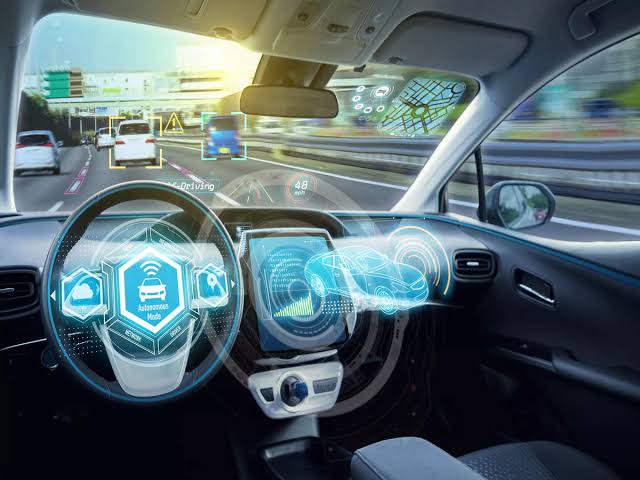Driving Efficiency: The Future of Automotive Electronics
Key Takeaways
- Automotive electronics are transforming the way vehicles operate and interact with drivers.
- Emerging technologies are enhancing vehicle safety, efficiency, and connectivity.
- The integration of automotive electronics is set to reshape the future of transportation.
Introduction to Automotive Electronics
In today’s fast-paced world, parts for EVs and cutting-edge automotive electronics are not just buzzwords. They mark a significant shift in the driving experience, making vehicles more intelligent and user-friendly. From onboard entertainment to advanced driver-assistance systems, electronics play a pivotal role in the evolution of automotive technology. As we move forward towards more sustainable and efficient transportation solutions, automotive electronics are at the core of this transformation.
The global demand for automotive electronics is driven by the increasing shift towards electric vehicles and the continuous innovation in autonomous driving technology. According to a report by MarketsandMarkets, the automotive electronics market size is foreseen to grow from USD 253 billion in 2021 to USD 392 billion by 2026. This growth underscores the critical role electronics play in enhancing vehicle performance and user experience. Whether it’s through efficient energy management or seamless connectivity, these technologies are shaping the future of how we travel.
Key Technologies Enhancing Efficiency
As vehicles evolve, the focus on efficiency becomes more pronounced. Hybrid and electric vehicles (EVs) serve as prime examples of this evolution. By utilizing intelligent electronics, these vehicles manage energy consumption more effectively, reducing emissions and operational costs. Advanced energy recovery systems, which convert kinetic energy back into usable electric power, and regenerative braking, which captures energy during braking, are technologies that play a vital role in improving efficiency.
Electric vehicles, in particular, rely heavily on precise electronic systems for power management and battery optimization. With the rise in consumer demand for EVs, manufacturers are investing in new technologies to extend battery life and enhance vehicle performance. These efforts are crucial as countries around the world, like the United States, set ambitious goals to phase out gas-powered cars, aiming for a cleaner and more sustainable future.
The Role of Connected Cars
Connected cars mostly have internet access, wireless networks are changing how we perceive transportation. These vehicles provide a seamless driving experience with real-time updates on traffic statuses, weather forecasts, and navigation assistance. Connectivity ensures that cars are not just modes of transport but become smart devices equipped to enhance personal mobility.
Beyond convenience, connected cars contribute significantly to safety and efficiency. Communicating with infrastructure and other vehicles helps prevent accidents and optimize traffic flow. Such technological advancements are paving the way for safer roads and smarter cities. The benefits extend to improved fuel efficiency through better traffic management, ultimately leading to reduced carbon footprints and a cleaner environment.
Innovations in Vehicle Safety
Safety is at the heart of automotive innovation. Automakers are integrating advanced safety systems in vehicles to decrease the risk of road traffic accidents. Technologies such as automatic emergency braking, adaptive cruise control, and lane-keeping assistance are making cars safer than ever before.
These systems rely on sophisticated electronics to monitor the vehicle’s surroundings and react promptly to prevent collisions. According to a study by the National Highway Traffic Safety Administration, these electronic safety innovations could potentially prevent thousands of accidents every year, significantly improving overall road safety. As technology continues to progress, these systems will become even more precise and intuitive, providing drivers with unparalleled levels of safety and peace of mind.
Shaping the Future of Transport
The integration of automotive electronics with infrastructure is reshaping the future of transportation. Smart roads and intelligent traffic systems, combined with autonomous vehicles, are set to revolutionize how we commute. Vehicles will soon be able to communicate with traffic lights, road signs, and each other to ensure efficient and safe travel.
This synergy not only aims to enhance the driving experience but also to improve overall traffic management and reduce congestion. The potential benefits include reduced travel times, lower emissions, and enhanced road safety, indicating a transformative shift in daily commuting as we move towards a world where the boundaries between vehicles and infrastructure blur, and the possibilities for innovation and efficiency seem endless.
Challenges and Opportunities
While the rise of automotive electronics brings numerous opportunities, it is not without challenges. Cybersecurity is a significant concern as vehicles become more connected and reliant on digital systems. Ensuring the protection of these critical systems from hacking and unauthorized access is paramount.
Furthermore, the industry must address issues related to the reliability and interoperability of these electronic systems. Overcoming these challenges requires collaboration between regulators, manufacturers, and technology providers to develop comprehensive standards and guidelines. The journey towards smarter, more efficient vehicles presents an exciting frontier full of potential, but it also necessitates careful consideration and proactive measures to overcome obstacles that lie ahead.
Conclusion
As we steer towards a future where vehicles are smarter, safer, and more efficient, automotive electronics will undeniably be at the core of this transformation. The industry stands at the cusp of a technological revolution that promises to redefine mobility and shape the way we experience transportation in the years to come. With continuous advancements and innovations, the possibilities are truly limitless, setting the stage for a future where our vehicles are integrated extensions of our connected lives. As we embrace these innovations, the focus remains steadfast on developing solutions that prioritize safety, efficiency, and sustainability for all.
From autonomous driving systems to AI-powered diagnostics, automotive electronics will enable a new era of seamless interaction between vehicles and their environments. By harnessing the power of connectivity, these innovations will not only optimize vehicle performance but also pave the way for smarter infrastructure and more sustainable urban mobility. As the automotive landscape evolves, the collaborative efforts of manufacturers, tech companies, and regulators will be crucial in ensuring that these breakthroughs benefit society as a whole, fostering a safer and more efficient world for generations to come.







